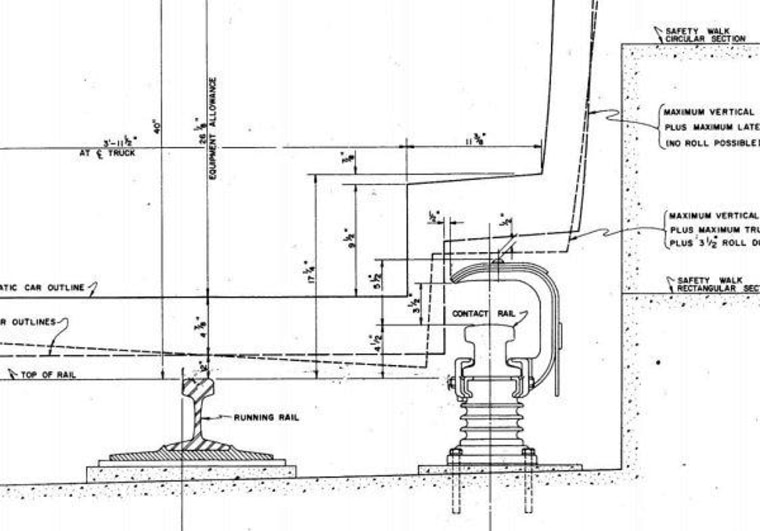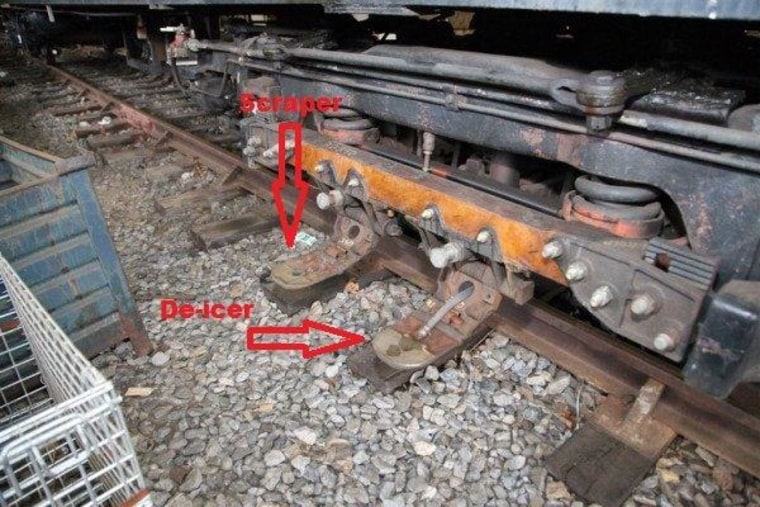New York City Transit's official Twitter account informs me there is such a thing as a "De-Icer car."
I've added a couple of arrows to their picture to help make clear what we're looking at. In case you're not familiar, the subway runs on three rails. Two rails are for the wheels and the third carries the electricity that powers the whole thing. The third rail runs outside the other two, which is why we see the De-Icer car's contact shoes sticking out the side.
I'm guessing about which is the scraper and which is the de-icer based on the tube we see on that second shoe. Another picture they share with us of the inside of the car shows tanks of fluid inside, which I'm guessing comes out of that tube.
Video and a little more after the jump...
I was hoping to find a more technical diagram of the relationship between the cars' shoes and the third rail, but this was the best I could find so far. It's from the Washington Metro technical specifications (pdf) and you can see the third rail (the contact rail) is thicker, higher and covered, next to the rail the wheel runs on (the running rail).

Lastly, there was an abundance of video of the De-Icer car online. I think it has a lot of fans. Interesting that even though its purpose is to make sure the subways can make contact with the rail and draw electricity to run, the De-Icer car is powered by a diesel engine, running independent of electricity.
In case you're wondering about ice on the running rails, that appears to be the responsibility of a different member of the snow removal fleet, which either blows, plows or brushes the tracks clear.
